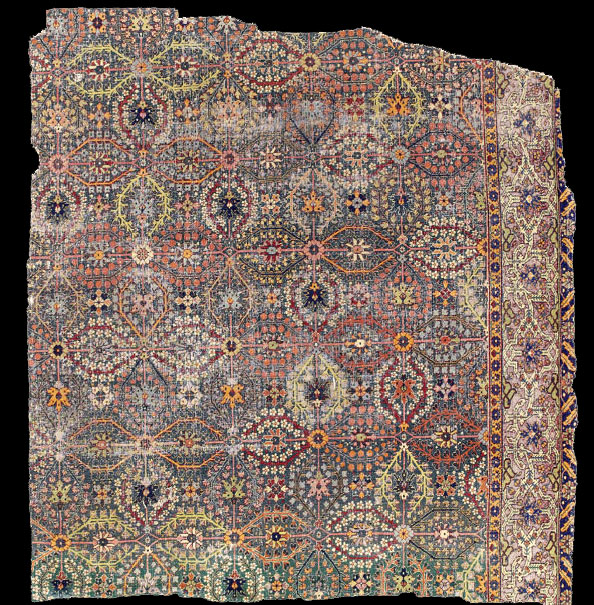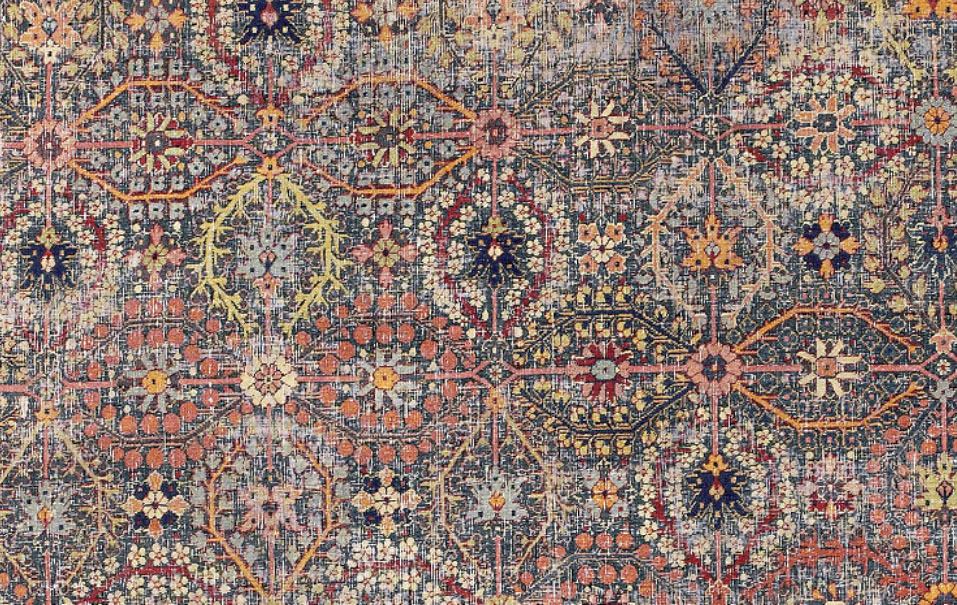|
Christie's Oriental Rugs and Carpets
Tuesday 23 April 2013
8 King Street, St. James's, London
Lot 149
A 'VASE' CARPET FRAGMENT, SAFAVID PERIOD
KIRMAN, SOUTH EAST IRAN, 17TH CENTURY
Uneven, overall wear, corroded sangue-de-bouef red, backed 7ft.11in. x
7ft3in.. (241cm x 220cm.)
US$23,000-30,000
The design of this Vase' carpet fragment conforms to the single plane floral
lozenge lattice type outlined by May H. Beattie, Carpets of Central Persia,
exhibition catalogue, Sheffield and Birmingham, 1976, nos.56 and 57,
pp.80-81. The design does not however relate closely to any of the examples
illustrated by Beattie. The quatrefoil lattice in the present fragment is
developed a stage further so there is no longer a directional design,
possibly showing the influence of the Mughal millefleurs rugs, a style that
became popular in Iran under Nader Shah, particularly after his looting of
Delhi (see Joseph V. McMullan, Islamic Carpets, New York, 1965, pls. 33 and
34, pp.140-143). 'Vase' carpets continued to be made in the mid-eighteenth
century as is demonstrated by an example with a single plane lattice field
in the National Museum, Tehran which bears an inscription dated AH 1172/1758
AD (Jenny Housego, '18th Century Persian Carpets, Continuity and Change',
Oriental Carpet and Textile Studies Hi, pt 1, London, 1987, pl. 3, p.42). It
seems likely that the present fragment dates to the same period.



|



